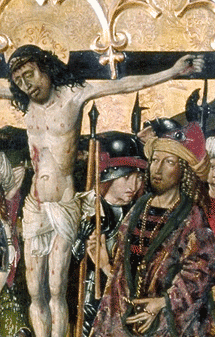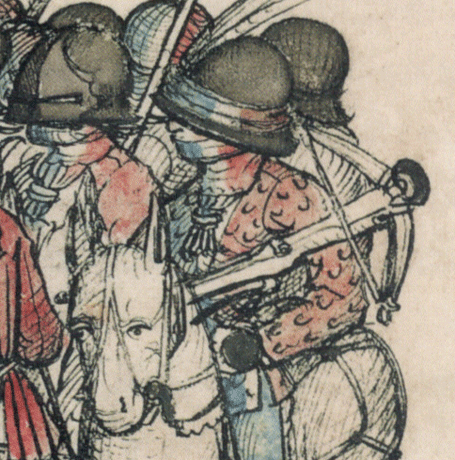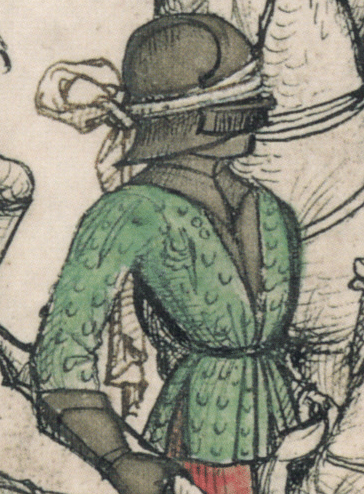Posts: 1,244 Location: New Glarus, WI
Wed 17 Sep, 2008 5:35 am
Sean, it's
one plausible (not to mention cheap and extremely fast to produce and distribute) livery or unit designation. Other possibles would be livery jackets or hoods.
For a city militia, it'd be a lot of "civilian" clothes, a jack and sallet, perhaps... possibly
maille or even a brig... not much of a "uniform" uniform.
It'd be like a US Civil War unit showing up with the clothes on their back and their personal rifle... and issued a hat. Another example might be a gang - everyone in their street clothes, but a bandanna to symbolize affiliation (though I will full-well expect that there will be more discipline and lawfulness amongst my troops).
In the Medieval Housebook, you see lots of red/white/blue and green/white. Augsburg is green and white... Nuremberg is red and white. I'm building my group based on 1470-80 Nuremberg, with strict guidelines on TYPE/STYLE of clothing and such, but open as to colors. We'll probably use hoods and these scarves parti-colored red/white to pull the unit together - the men's will be pretty plain; mine, as Hauptmann, with black and gold strands as well, with a gilt broach and some peacock or pheasant feathers at the side of my sallet. I full-well expect that there will be some variation in how they're tied or secured.
Another good source book for modern interpretation is The Medieval Soldier by Gerry Embleton & John Howe.
Hope you're finding the Hausbuch interesting!





